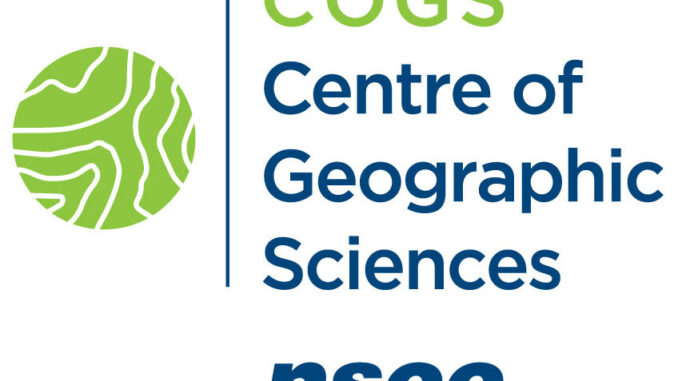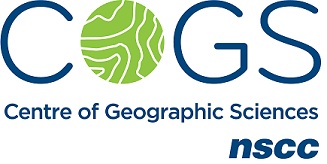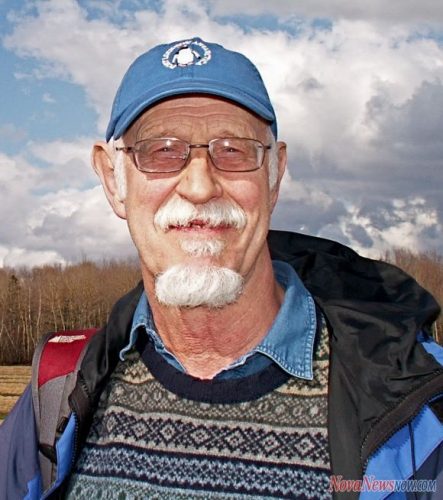

At the end of last month, John Wian hosted the Annual General Meeting (AGM) of the CANMAP Research Institute in Bridgetown. The CANMAP Research Institute was formed in the early 1980’s by John, with input from Roger Tomlinson. John was Vice-Principal at the Nova Scotia Land Survey Institute (NSLSI). At that time, there were few mechanisms for technical institutes to conduct applied research. John invented CANMAP (Canadian Applied Numerical Mapping Applications Project) to meet this need. Prior to assuming his administrative role, John had been a Cartography instructor, with an academic background in Geology.
CANMAP completed a number of projects, applying Remote Sensing and Digital Cartography technologies to a variety of geographic problems in the region. In the same time frame, NSLSI housed the Nova Scotia Remote Sensing Centre, under the local management of Bill O’Neill. This was at a time when each province had their own Remote Sensing centre. They were all affiliated with the Canada Centre for Remote Sensing (CCRS) in Ottawa.
There have been many changes in Lawrencetown over the last forty years. NSLSI was renamed the College of Geographic Sciences in 1986. Later, it became the Centre of Geographic Sciences, part of the Annapolis Valley campus of the Nova Scotia Community College (NSCC). The NSCC established the Applied Geomatics Research Group (AGRG) to conduct Applied Research at Middleton in 2000. Meanwhile, CANMAP, as a not-for-profit, continued under its board’s direction to support graduation awards at COGS.
At the Annual General Meeting (AGM), there was discussion about the future role of CANMAP in relation to COGS, as well as the broader question of economic and community development in rural Nova Scotia. This conversation coincided with a new report by the Government of Nova Scotia: SHIFT – Nova Scotia’s Action Plan for an Aging Population http://novascotia.ca/shift . There are three goals: to value the social and economic contribution of older adults; to promote healthy,active living; and support aging in place, connected to community life.
After the meeting, my immediate reaction was to go to the bookshelf at home. In the SHIFT report, the first goal is to engage older adults. The composition of the CANMAP Board is both retired instructors and current instructors at COGS. Mary Catherine Bateson, daughter of Gregory Bateson and Margaret Mead, has written a couple of books on this topic. Of particular relevance is her latest Composing a Further Life. The Age of Active Wisdom. To quote page 20 on Adulthood II:
” We tend to assume that the old, because they have fewer years ahead of them, are less concerned with the future than younger adults, but in fact the group best equipped to advocate for the future are thoughtful older adults – this in Adulthood II – who have time and perspective for reflection, combined with the willingness to consider new ideas and acquire new skills; who can speak up about issues that affect future generations, particularly issues of the environment, and engage in bringing that future to pass.”
My proposal
As a concrete Action from the SHIFT report, why not open up the programs at COGS to the Adulthood II cohort. Encourage this group of older adults to develop new skills which allows them to build applications and contribute to the solution of economic development issues in rural Nova Scotia. They will benefit by access to the language and technology available at COGS and AGRG. Students at COGS and AGRG will benefit from the active wisdom.
This is happening to a degree through the community mapping project, MapAnnapolis http://mapannapolis.ca but we could be doing so much more. CANMAP’s role could be to provide bursaries and awards to this component of the population.The NSCC might want to consider proactive action, along these lines, for all appropriate programs at its rural campuses.
Within the GoGeomatics community, we have a wonderful example. If you check the blog entry by Claus Rinner, March 3/2016. GIS made in Canada – Doug Seaborn’s VISION. Doug was President of GeoVision. In 2016, he was enrolled in the Masters of Spatial Analysis (MSA) program at Ryerson University. In the interview with Rinner, Doug comments on the need to update his technical skills.
In conclusion, CANMAP has shown that we can map. Now we have to show that we can shift gears. This means breaking down any remaining barriers between our education institutions and their surrounding communities; it means being more inclusive.
References:
SHIFT report. 2017. Nova Scotia’s Action Plan for an Aging Population. http://novascotia.ca/shift
Mary Catherine Bateson. 2010. Composing a Further Life. The Age of Active Wisdom. Knopf. New York.





Be the first to comment